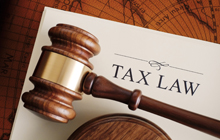Bank Of Nova Scotia v The King: How a procedural rule on loss carrybacks triggered $7.9M in interest arrears on tax not owing

It’s a matter of interest as to why Scotiabank is appealing to the Supreme Court of Canada after losing Canada Revenue Agency decisions in the lower courts
Introduction: Arrears Interest and the Role of Statutory Triggers in Loss Utilization
In Bank of Nova Scotia v His Majesty the King, the Federal Court of Appeal (FCA) confirmed the Tax Court's decision that arrears interest could accrue until the date of a reassessment, even in situations where a subsequent loss carryback effectively offsets most of the reassessed tax liability.
The central issue was whether interest on the taxpayer's 2006 arrears ceased in 2009, when the tax return for the loss year was filed, or in 2015, when the Bank formally requested the loss carryback.
Relying on subparagraph 161(7)(b)(iv) of the Income Tax Act (ITA), the Minister calculated interest on the full amount of reassessed taxable income—disregarding the loss carryback — until 30 days after the written request was made. This method resulted in an interest charge of approximately $7.9 million, despite the Bank's actual tax payable being reduced to about $1 million after applying the carryback.
The six-year gap (from 2009 to 2015) between the loss year filing and the formal carryback request proved decisive. The FCA held that, under the ITA, interest continued to accrue during that entire period.
In this article, we summarize the key facts, analyze the Federal Court's interpretation of the governing provisions, and explain why the decision reaffirms the importance of careful documentation and proactive requests when dealing with carryback adjustments.
Audit and Reassessment Timeline: How the Dispute Arose
The case centred around the Bank of Nova Scotia's 2006 tax year. In 2015, the CRA reassessed the Bank following a transfer pricing tax audit. The reassessment added $55 million in income. Consequently, the Bank wrote a letter to the CRA to carry back a $54 million non-capital loss from 2008 to offset this adjustment. As a result of the reassessment, the net increase in taxable income was only about $1 million.
However, the CRA assessed $7.9 million in arrears interest on the full $55 million tax liability for a period leading up to 2015. The CRA relied on subparagraph 161(7)(b)(iv) of the ITA, which provides that interest is calculated for a specified period by ignoring the loss carryback or other specified deductions.
In this case, this means that instead of calculating interest on tax assessed of $1 million, interest for a specific period is calculated on a notional amount of tax that would be payable if the loss carryback were ignored, and the Bank's taxable income were $55 million instead.
While the parties agree that subsection 161(7) of the ITA must be applied in this case, they disagree on the specific period to which it applies. The Tax Court concluded that the loss carryback should be ignored for approximately eight years. In contrast, the Bank appeals this decision, arguing that the carryback should only be ignored for two years (subparagraph 161(7)(b)(ii)).
Tax Court's Analysis: Why the CRA's Interest Calculation Was Upheld
The Bank argued that Parliament did not intend for taxpayers to incur arrears of interest where a loss carryback was available. Still, it was unaware it could be used until the tax audit was completed (para. 18). It emphasized that other discretionary deductions are not subject to similar restrictions under the ITA.
Moreover, the Bank contended that subparagraph 161(7)(b)(iv) did not support the CRA's position, since that provision requires the reassessment to occur "as a consequence" of the carryback request, whereas, in this case, the reassessment stemmed from the tax audit itself.
In contrast, the Canadian tax lawyer for the CRA suggests that the causal element is satisfied because the CRA did not implement the loss carryback of its own accord but took it into account at the Bank's request.
The Tax Court rejected the Bank's submission. In its view, the language of subparagraph 161(7)(b)(iv) was unambiguous in both English and French. The Court also cited subsection 152(3) of the Income Tax Act, reinforcing that tax liability is determined by law, which provides that tax liability is not affected by an incorrect or incomplete assessment.
FCA's Interpretation of Subparagraph 161(7)(b)(iv): Text, Context, and Purpose
The FCA held that the question to be decided is purely a matter of statutory interpretation. Referring to Canada Trustco, the Court reiterated that statutory provisions must be interpreted using a textual, contextual, and purposive approach to arrive at a meaning harmonious with the Income Tax Act as a whole (paras. 40–41).
This decision underscores how statutory precision can override equitable arguments —something expert Canadian tax counsel must carefully consider when advising on loss carryback strategy in post-audit contexts.
While acknowledging that the statutory language had ambiguity, the Court determined that both the English ("as a consequence of") and French ("à la suite de laquelle") texts required a causal connection.
The Bank submits that the causal element was intended to exclude the present circumstances because the 2015 reassessment was not made "as a consequence" of its carryback request. Instead, the reassessment was made to process the audit adjustment.
The FCA also rejected this argument, holding that the loss carryback request played a causal role in the reassessment. Since the CRA cannot apply a carryback without a taxpayer's request, the Court found that the statutory condition in 161(7)(b)(iv) was satisfied.
Additionally, the FCA held that if Parliament did not intend to impose interest when a loss carryback is claimed "as a result" of an audit adjustment, it is likely that Parliament would have provided for this with explicit language. However, the language used is not explicit and does not reference audit adjustments (para. 39).
The Court also dismissed the Bank's fairness arguments, holding that the provision operates as written, even if the result seems harsh. Notably, the Court recognized that this provision could create significant interest liabilities when tax audits and loss carryback requests are not aligned in timing.
The Court also dismissed another argument related to the notion that interest rules for loss carrybacks should mirror those for loss carryforwards or other discretionary deductions. In the Court's view, the legislation intentionally treated these scenarios differently, and the existence of inconsistent outcomes did not justify departing from the clear language of the provision (para. 51-53).
For expert Canadian tax lawyers, the decision is a reminder that procedural triggers—not just economic substance—drive interest calculations under the ITA. Taxpayers should take particular care in promptly filing loss carryback requests, even when an audit is ongoing, to mitigate the risk of extended interest exposure. Where large amounts of arrears interest arise from audit-related timing, taxpayers may consider requesting interest relief under subsection 220(3.1).
Appeal to the Supreme Court: What's Next for Bank of Nova Scotia?
As of February 2025, the taxpayer has sought leave to appeal the Federal Court of Appeal's decision to the Supreme Court of Canada. According to the Supreme Court's Bulletin of Proceedings dated February 14, 2025, an application for leave to appeal was filed on January 20, 2025, under SCC file number 41643. The outcome of this application could further shape the interpretation of subsection 161(7) of the Income Tax Act and interest accrual rules in reassessment scenarios.
David J Rotfleisch, CPA, JD is the founding tax lawyer of Taxpage.com and Rotfleisch & Samulovitch P.C., a Toronto-based boutique tax law corporate law firm and is a Certified Specialist in Taxation Law who has completed the CICA in-depth tax planning course. He appears regularly in print, radio and TV and blogs extensively.
With over 30 years of experience as both a lawyer and chartered professional accountant, he has helped start-up businesses, cryptocurrency traders, resident and non-resident business owners and corporations with their tax planning, with will and estate planning, voluntary disclosures and tax dispute resolution including tax audit representation and tax litigation. Visit www.Taxpage.com and email David at david@taxpage.com.
Read the original article in full on Tax Law Canada. Author photo courtesy Rotfleisch & Samulovitch P.C. Title iamge: iStock ID: 1342049706.










(0) Comments